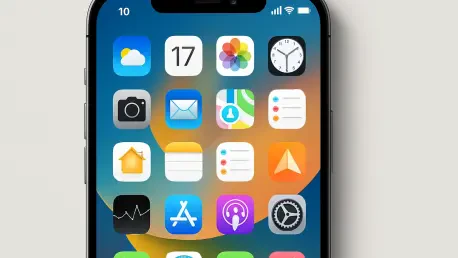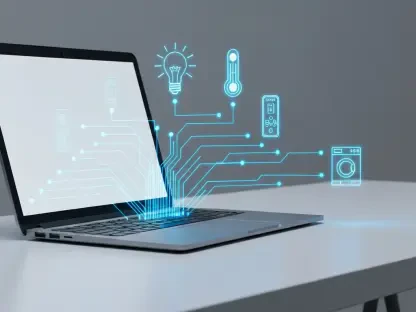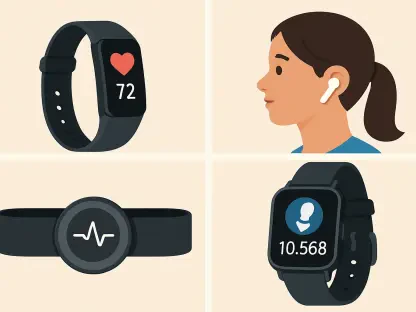Imagine a world where your smartphone interface feels like a seamless extension of your thoughts, with visuals so striking they redefine how you interact with technology every day, and Apple’s latest operating system update, iOS 26, promises to bring this vision closer to reality with its groundbreaking design and innovative features. As the tech giant prepares for a mid-September release, excitement is building around what this update holds for iPhone users across the globe. Beyond aesthetics, the update introduces practical tools designed to enhance daily communication and functionality. However, not every device will make the cut for compatibility, raising questions about accessibility and the future of older models. This article delves into the details of which iPhones can run iOS 26, the standout features generating buzz, and the implications for users considering the beta or sticking with their current hardware. Stay tuned to uncover how this update could transform the user experience.
Unveiling the New Design and Features
The centerpiece of iOS 26 is its visually captivating “Liquid Glass” design, a bold aesthetic overhaul that aims to unify the look across Apple’s ecosystem. This design introduces a sleek, almost fluid interface with revamped app icons that seem to float on the screen, complemented by enhanced dark mode options for a more immersive feel. Floating button designs further elevate navigation, making interactions smoother and more intuitive than ever. This isn’t just about looks; it’s about creating a cohesive environment where every visual element feels interconnected. Apple has clearly invested in ensuring that users notice the difference from the moment they unlock their devices, setting a new standard for what an operating system can offer in terms of visual appeal. As anticipation builds, this design promises to be one of the most talked-about aspects of the release, potentially redefining user expectations for smartphone interfaces in the coming years.
Beyond the stunning visuals, iOS 26 brings a suite of functional enhancements that cater to everyday needs. A redesigned Phone app streamlines access to contacts and calls, making communication more efficient with just a few taps. The introduction of Live Translate is another game-changer, offering real-time conversation translation that breaks down language barriers during calls or chats. Additionally, a new Polls feature in the Messages app simplifies group decision-making by allowing users to create quick surveys within conversations. These tools reflect Apple’s focus on practicality, ensuring that the update isn’t just a visual upgrade but a meaningful improvement to how users connect and interact. For those eager to explore these innovations, the public beta offers a chance to experience them firsthand, though it comes with considerations about stability and performance that will be explored later in this discussion.
Device Compatibility and Limitations
One of the most critical aspects of iOS 26 is determining which devices will support this transformative update. The good news is that iPhones from the 2019 lineup onward, starting with the iPhone 11 series, are confirmed to be compatible. This includes the iPhone SE (second generation or later) and extends to the upcoming iPhone 16 series expected later this year. Apple’s commitment to supporting a wide range of devices ensures that many users can enjoy the latest features without needing immediate hardware upgrades. However, this broad compatibility also highlights a strategic balance between innovation and accessibility, as the company continues to push forward with software that demands more powerful hardware. For those with eligible devices, the update represents an opportunity to refresh their user experience without additional cost beyond the download itself.
Unfortunately, not all iPhones will make the transition to iOS 26, and some users may find themselves left behind. Specifically, three models from 2018—the iPhone XR, iPhone XS, and iPhone XS Max—will not support the new operating system. This marks a notable shift from last year’s update, which didn’t exclude any devices, and aligns with Apple’s historical trend of phasing out older hardware as software requirements grow. For users of these unsupported models, the implications are significant, as they will miss out on new features and, more critically, future security updates. This exclusion could lead to compatibility issues with newer apps and heightened vulnerability to malware or other threats. The decision underscores the challenges of balancing technological progress with the longevity of older devices, prompting affected users to consider whether upgrading their hardware is a necessary step to maintain a secure and up-to-date experience.
Beta Testing Opportunities and Risks
For those eager to explore iOS 26 ahead of its official mid-September release, the public beta provides an accessible entry point. Unlike the developer beta, currently at its fifth iteration and tailored for professionals, the public beta is open to all users and is generally considered more stable. This inclusivity allows a broader audience to test the new design and features, offering valuable feedback to Apple before the final rollout. Participating in the beta can be an exciting way to experience cutting-edge updates like Live Translate or the Liquid Glass interface before they hit the mainstream. However, it’s worth noting that even the public beta isn’t without its challenges, and users should approach it with a clear understanding of what early access entails. Apple’s structured beta phases reflect a cautious approach to ensure the final product meets high standards of reliability for the wider user base.
Despite the allure of early access, engaging with the iOS 26 beta comes with inherent risks that cannot be overlooked. Beta software, by nature, is unfinished, which means users might encounter glitches, app crashes, or performance issues that disrupt daily usage. While the public beta is more refined than its developer counterpart, it still lacks the polish of a final release. For those relying on their iPhones for critical tasks, such as work or emergency communication, the potential for instability could outweigh the benefits of testing new features. Apple advises users to back up their devices before installing the beta and to consider using a secondary device if possible. This cautionary stance highlights the importance of weighing the excitement of innovation against the practical need for a dependable smartphone experience, ensuring that participants make informed decisions about joining the beta program.
Looking Back at the Journey of iOS 26
Reflecting on the rollout of iOS 26, it became clear that Apple had struck a delicate balance between pushing boundaries and maintaining accessibility for a wide user base. The introduction of the Liquid Glass design and practical tools like Live Translate had sparked widespread enthusiasm, while the compatibility cutoff for 2018 models reminded everyone of the inevitable march of technological progress. The public beta had served as a valuable testing ground, allowing users to engage with the update early on, even as it highlighted the risks of unfinished software. For many, the mid-September release had marked a pivotal moment to either embrace the new features or consider hardware upgrades. Moving forward, users were encouraged to stay informed about future updates and security patches, especially if holding onto older devices. Exploring Apple’s support resources or planning for a device refresh could ensure a seamless transition into the evolving digital landscape, keeping experiences both secure and cutting-edge.









